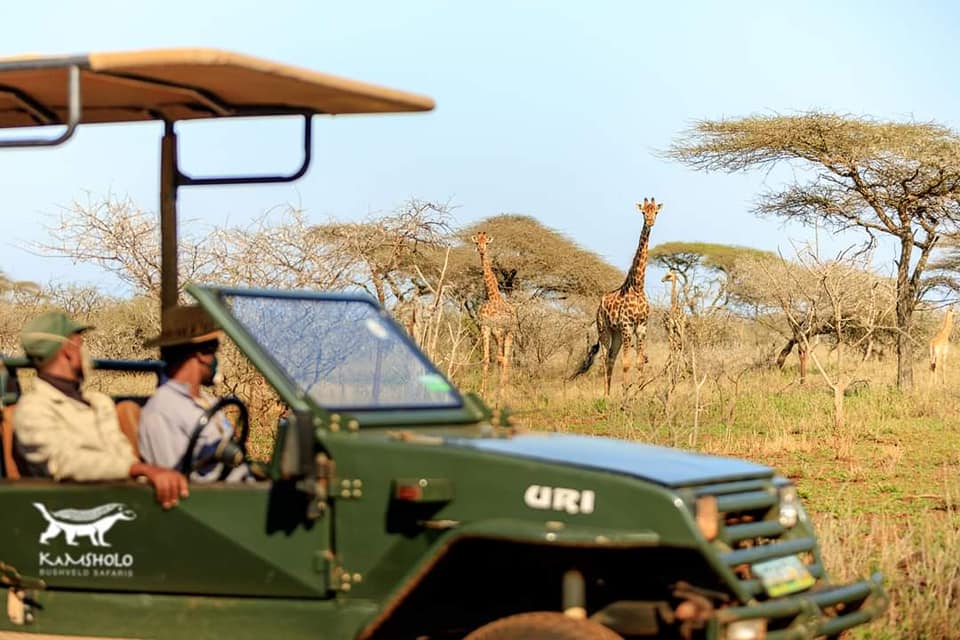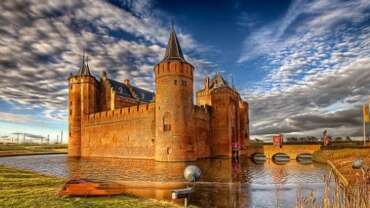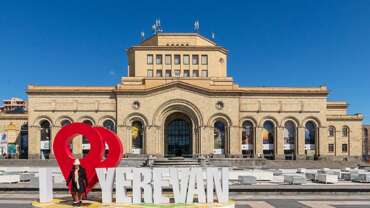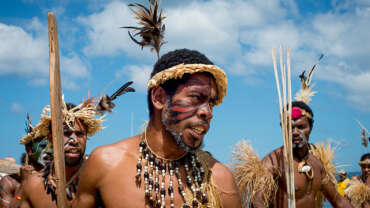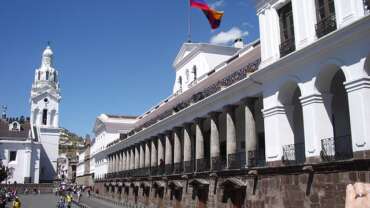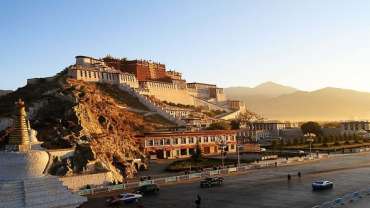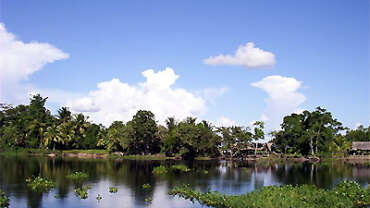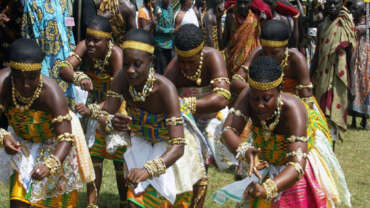Welcome to the Eswatini (Swaziland)!
Eswatini, officially the Kingdom of Eswatini, sometimes written in English as eSwatini, and formerly and still commonly known in English as Swaziland, is a landlocked country in Southern Africa. It is bordered by Mozambique to its northeast and South Africa to its north, west, and south.
History of Eswatini (Swaziland)
Early history
The Swazi nation is a relatively recent political grouping, the main amalgamation of clans having taken place under Dlamini military hegemony about the middle of the 19th century. However, the record of human settlement in what is now Eswatini stretches far back into prehistory. The earliest stone tools, found on ancient river terraces, date back more than 250,000 years, and later stone implements are associated with evidence of Homo sapiens from perhaps as long ago as 100,000 years. By 42,000 years ago the inhabitants were quarrying red and black hematite ore for cosmetic purposes on the top of the Ngwenya massif (where in 1964 a large opencut mining operation was developed to exploit the rich ore deposit). This ranks as one of the world’s earliest mining and trading activities, and mining continued for many thousands of years after that. Much later—about 20,000 years ago—the archaeological record reveals occupation by the ancestors of the San hunter-gatherers, who created the distinctive rock paintings found throughout the western part of the country.
About 2,000 years ago groups of Bantu-speaking peoples (Nguni, Sotho, and Tswana) moved southward across the Limpopo River. They cultivated crops, kept livestock (sheep and goats), used pottery, and smelted iron—hence their designation as Early Iron Age peoples. At a later date cattle were introduced. These people are recorded at Ngwenya, where the mining of iron ore has been dated to about 400 CE. During the following centuries the more attractive areas of Eswatini were settled by these ancestors of the Nguni and Sotho clans, whom the Swazi encountered in the late 18th and early 19th centuries.
The ancestors of the Dlamini clan were part of this southward movement, which reached the Delagoa Bay area (now Maputo) of Mozambique some considerable time before the arrival of the Portuguese in the early 16th century. There they settled as part of the Thembe-Tonga group of peoples until the mid-18th century, when, probably because of dynastic conflict, they moved southward along the coastal plain between the mountains and the Indian Ocean—“scourging the Lubombo,” as a royal praise song puts it. Up to this time they called themselves Emalangeni, after an ancestral Langa. Later they moved westward through the Lubombo range and up the Pongola valley, where about 1770 under their king Ngwane III they established the first nucleus of the Swazi nation (bakaNgwane) near what is now Nhlangano.
Emergence of the Swazi nation
This was a turbulent period in the history of southeastern Africa, when a number of major clan groupings were struggling for supremacy. Two of these, the Ndwandwe and the Zulu, located to the south of the new Ngwane homeland, constituted a serious threat to the Dlamini, who strove to establish their control over the clans among whom they had settled. Nevertheless, by the end of the century, they had achieved considerable success in assimilating some of these clans and in forging bonds with others to create a new political grouping. However, this new power base was not strong enough to ward off aggression by their southern neighbours, so about 1820 under their new king—Sobhuza I, or Somhlohlo (“The Wonder”)—they moved northward to establish a safer heartland in central Eswatini (the Middleveld). There the Dlamini consolidated their power under Sobhuza I and his son Mswati II. Part of this success must be attributed to Sobhuza’s adoption of the Zulu age-group system of military organization, which created regiments across clan loyalties and which was at all times strictly disciplined. By 1860 they had extended their power through conquest and assimilation far beyond the boundaries of present-day Eswatini under Mswati II, whom later generations described as “their greatest fighting king” and who gave his name to the nation.
At the peak of their power, however, a new factor had emerged in the regional geopolitics, which over the next 40 years caused the gradual contraction of Swazi territorial and political authority. This was the competing pressure from the expanding Boer republic of the Transvaal and from the growing British imperial presence, especially after the discovery in South Africa of diamonds in 1867 and gold in 1871.
The main destabilizing force was the stream into the country of European prospectors and concession hunters, which the Swazi were able to contain for a while but which became a flood after the kingship passed to Mbandzeni in 1875. By 1890 so many concessions had been granted for so many purposes (in addition to land and mineral rights) that practically the whole country was covered two, three, or even four deep in concessions of all kinds and for different periods. Although the Swazi maintained that these were all leasehold rights that would terminate at some future date, they had, as it later transpired, signed away their independence.
In 1888 the Swazi tried to regulate the new influences that the influx of Europeans had created by granting them a charter of conditional self-government subject to the royal veto. Behind the concessions scramble by individuals, however, lay the intrigue and conflict of the two white powers, the Boers and the British. The former needed a route to the sea, while the latter wanted to contain them. The area inhabited by the Swazi stood in the way, as an obstacle to be manipulated by both.
In 1890, under a convention between the British government and the South African Republic, a provisional government consisting of representatives of the two powers and a representative of the Swazi people was set up. In 1893 the British government signed a new convention permitting the South African Republic to negotiate with the Swazi regent and her council for a proclamation allowing the republic to assume powers of jurisdiction, legislation, and administration without the incorporation of Swaziland, as it was then known, into the republic. The Swazi refused to sign the proclamation, but in 1894 another convention was signed by the two powers, virtually giving unilateral effect to its terms. After the South African War of 1899–1902 all the rights and powers of the republic passed to Great Britain, and in June 1903, by an order in council under the Foreign Jurisdiction Act, the governor of the Transvaal was empowered to administer Swaziland and to legislate by proclamation. In 1906 these powers were transferred to a high commissioner for Basutoland, Bechuanaland, and Swaziland.
Colonial administration
The colonial years from 1906 to the late 1940s saw Swaziland drift into a backwater of the British Empire. A fundamental reason was that provision had been made in the South Africa Act of 1909 (which established the Union of South Africa as a British dominion) for the possible eventual transfer of Swaziland (and Basutoland and Bechuanaland) to the union. While this possibility existed, no socioeconomic improvement took place, and it was difficult to distinguish Swaziland from the neighbouring rural areas of South Africa (there were no border posts). Politically, the situation was epitomized in the downgrading of the title of king to that of paramount chief and of his function to that of “native administration.” Despite a number of requests from South Africa over the years, however, the imperial power declined to transfer Swaziland. This resolution was stiffened by events in South Africa after the 1948 election, which heralded the onset of apartheid. Also, from 1945 onward, Britain had begun to tackle socioeconomic problems. By the mid-1950s the issue of transfer was dead, though the grand apartheid design of separate homelands for Africans still included Swaziland.
From 1960 the economy forged ahead steadily, but sociopolitical progress followed more slowly. A constitution providing for limited self-government was promulgated in 1963, and in 1967 the country became a protected state under which the kingship was restored. This was followed by full independence on September 6, 1968.
Eswatini since independence
King Sobhuza II of Swaziland was installed as the ngwenyama of the Swazi nation in 1921. The king jealously cherished and preserved Swazi traditions. Five years after independence, the king repealed the constitution designed by the British and restored the traditional system of government, in which all effective power remains in the royal capital. A system of local government, known as the tinkhundla, operates at the grass roots. Sobhuza’s concession to modern government was to retain the cabinet system with a prime minister and other ministers, but all are chosen by the king. Under his firm but benevolent rule, Swaziland enjoyed a remarkable degree of political stability and economic progress. Emphasis was placed on education—which had been neglected in colonial times—on health, and on other human resource developments.
King Sobhuza’s death on August 21, 1982, was followed by a power struggle within the royal family, which was not finally resolved until 1986, when the teenage heir, Prince Makhosetive, was installed as King Mswati III. His rule, characterized as autocratic and rife with corruption and excess, was beset with demands for democratic reform. Demonstrations and strikes were held during the 1990s and 2000s to protest the slow pace of progress toward democratic change. To appease his many critics, King Mswati III appointed a committee to draft a new constitution in 2001. Released for public comment in May 2003, it was criticized for falling short of democratic reform, as it banned opposition political parties and allowed the king to retain absolute governing powers. King Mswati III signed a revised version in 2005, effective in 2006, that neither banned political parties nor acknowledged their existence.
On April 19, 2018, King Mswati III announced that he was changing the official name of the country from the Kingdom of Swaziland to the Kingdom of Eswatini.
People of Eswatini (Swaziland)
Ethnic groups
The Swazi nation is an amalgamation of more than 70 clans. Their chiefs form the traditional hierarchy under the ngwenyama and ndlovukazi, who are of the largest clan, the Dlamini. The amalgamation brought together clans already living in the area that is now Eswatini, many of whom were of Sotho origin, and clans of Nguni origin who entered the country with the Dlamini in the early 19th century. Traditional administration and culture are regulated by an uncodified Swazi Law and Custom, which is recognized both constitutionally and judicially. The language is siSwati, which is akin to Zulu, though it shares official status with English, which is in fact used generally for official written communication.
The Swazis constitute more than four-fifths of the population, the remainder being immigrants from Mozambique, South Africa, and the rest of the world. Included among these are a few thousand Europeans and Asians and their families engaged in business activities.
Religion
The majority of Swazis belong to Christian churches, both Roman Catholic and Protestant, whose missions were responsible before independence for much of the education and health services, particularly in the rural areas. However, many adherents also retain the traditional beliefs and practices of the rest of the population.
Cultural Life of Eswatini (Swaziland)
Cultural Life
Despite the changes wrought by the money economy, by a high degree of literacy and basic education, and by steadily improving living standards and changing life-styles, tradition continues to play an important role in Swazi society, both at the national ceremonial level and in day-to-day personal contacts. This reflects the unity of the Swazi as one nation under a traditional leader and especially their reverence for the struggle of King Sobhuza II over the 61 years of his reign to regain their independence.
The two main cultural events are the Incwala in December and the Umhlanga in August. The Incwala is sometimes described as a first-fruits ceremony, but, spread over six days, it is a much more complex ritual of renewing and strengthening the kingship and the nation, with songs and dances used only on this occasion. The Umhlanga, or Reed Dance, brings together the unmarried girls and young women of the country to cut reeds for the annual repairs to the windbreaks of the queen mother’s village; it lasts for five days. It is also symbolic of the unity of the nation and of its perpetuation through the massed ranks of young women. Both ceremonies are held at the national capital of the queen mother.
Other ceremonies are associated with the communal weeding and harvesting of the king’s fields (and those of the chiefs) and with customary marriages. Most ceremonies are accompanied by traditional music, songs, and dancing. Musical instruments are simple in design, a kudu horn (impalampala) used for hunting or herding cattle, a calabash attached to a bow (umakweyane) for love songs, the reed flute, played by small boys while herding, and rattles made of seedpods attached to the wrists and ankles. However, more typical of the homestead nowadays are the radio and record and tape players.
Eswatini (Swaziland) Experiences
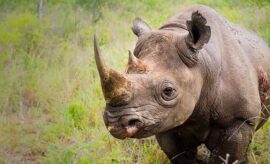
Africa in a nutshell. It may be a cliché but there is no better way to describe Eswatini (Swaziland). This tiny nation – one of Africa’s last monarchies – packs in an extraordinary variety of rich experiences and activities. Nature lovers can track down rhinos in the wild lowveld or seek out rare birds in the rugged highveld. Historians can visit the world’s oldest known mine or follow the colonial trail of the early settlers. And culture vultures can thrill to the Umhlanga and other festivals, as Eswatini celebrates its ancient traditions in spectacular style. Activities ranging from horse riding and river rafting to golf and thermal spas offer excitement and relaxation in equal measure. What’s more, Eswatini is friendly, safe and so compact that nowhere is more than two hours’ easy drive from the capital. So what are you waiting for? Africa’s most perfectly formed nation offers you a warm Swazi welcome.



